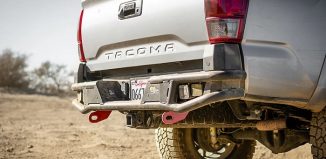You’ll be looking for replacement seats in your car for different reasons. But the most obvious is more comfort. Seats that tire you quickly can soon become a safety concern. Most are generic options, and a one-size-fits-all solution chosen mainly as a cost-cutting measure. Though there’s some variety when speccing a new car in terms of lumbar and side support, and the range of materials and colours, most seats are intended to fit different body shapes. Some do a good job, while others fall far behind.
For off-roading purposes, you can do much better than the spartan options on base spec utes and 4WDs. Here the money is in outright performance and off-roading capability, with the interior and seats more of an afterthought. Bench seats spanning the width of the car might have all but been replaced by comfier and more supportive bucket seats, but here too everything is bit too basic. Comfort might be decent on the tarmac, but the first moment you see unsealed roads, or anything remotely resembling a dirt path, then all this changes.
If you’re considering replacing your 4wd seats for something cushier but also more supportive in treacherous terrain, then there are a variety of aftermarket options. You won’t be hurled around like a bag of spuds when the roads get mad as a cut snake. Or risk edging the car into a ditch since you were thrown out of your seat. When buying, look for seats that have the right blends of comfort, support, ergonomics, and safety. All this in the right doses will make the hours spent behind the wheel more of a treat than outright torture.
How Off-Roading Seats Differ
Driving off-road has its challenges. Undulations, ruts, rocks, and uneven and loose surfaces aren’t exactly at the level of reclining lounge chair with the massaging function of comfort you’ll see. Here a seat that absorbs the impact and keeps you upright is what you need to focus on. Something that has ample lumbar and thigh support and bolstering to the sides will do the trick. And to do this, 4wd seat designs are different from what you’d find in your daily runabout, or even full-on performance seats meant for the track.

First, there’s a metal frame of mild steel tubing that provides the needed strength against all that flexing. This also has to be lightweight and happens to be what the rest of the seat is built around. Then there’s the padding, and this lends to a specific type of seat often reserved for utes and 4WD suspension seats. The term refers to a system of webbing made of extra-strong cords and straps stretched across the metal frame, covered with a supportive liner.
The padding is available in a variety of ergonomic designs to suit different body shapes. This is the type of customisation you want if you’re picky about comfort. The whole assembly is covered with a fabric that needs to be water, heat and tear-resistant. You also need a model that can easily be cleaned with a simple hosing down to get rid of any dirt or grime that the car picks up along the way.
Seats are completed with fixed or adjustable headrests, and most include inserts for fitting harnesses. The choice of fabrics is down to personal preference. Durable cotton or synthetics are hardwearing and just the right blend for off-road use, as compared to something like faux or real leather. They’ll last longer, are easier to clean and as a bonus much cheaper.
Mounting Brackets and Seat Installation
ADR approval means that the seats need to fit precisely in the mounting holes in the car body. This is to ensure that they stay put in all driving situations, including collisions. Retailers make this easier by providing properly sized mounting brackets (either flat or slide) for separate 4WD and ute makes and models. This is often sold with the seat itself or can be sold separately.
The brackets have integrated sliding mechanisms that allow drivers and passengers to slide seats forwards or backward and get the right seating position. Installing new seats into your off-roading rig can be done by someone who knows their way around basic tools, or you can foot the bill for a pro fit. Installation involves removing wiring connected to the seats and seat belts that trigger the seat belt warning light in the dash, then unbolting the old seat from the holding bracket and car chassis.

Common sense calls for a good cleaning and vacuuming (amazing what you can find under some seats), installing the new brackets with the provided bolts, replacing the seat belt wiring and bolting the new seat down. A pair of seats can take roughly an hour if all goes to plan. Your seats can also be adorned with heating and ventilation kits, and the latter is especially more useful in hotter Aussie weather and in areas where utes and 4WDs call home. These kits however need a little more time in installation and might not work with fabric options.
What New Seats Warrant
Aftermarket car seats for your 4WD need to offer adequate support under a range of driving conditions, protection and support in case of a crash, and extensive adjustment options to get you in the right seating position. They also have to limit fatigue and be ergonomically designed so as not to restrict normal movement. These are comfort and safety features found in most replacement 4wd seats.
Fabrics need to be long-lasting and easy to maintain and clean, and connecting brackets and additions like included harnesses or headrests are made to a standard and in high-quality materials. Seats that tick all these boxes will definitely provide a much better experience off-road than any sagging and worn seats that you’ve currently got.












